Largest Monastery Library in the World and Gothic museum in Admont Abbey
We have known for a long time that the largest monastery library in the world is located in Admont Abbey. We only heard of the Gotik Museum in the abbey when we received an invitation to go on a research trip to the Benedictine abbey in the Styria reached. We finally got to know how great these cultural sites are on site. And not only that! Admont Abbey offers even more that is worth discovering. Let yourself be carried away into a world of art and silence in the middle of a nature that takes your breath away.
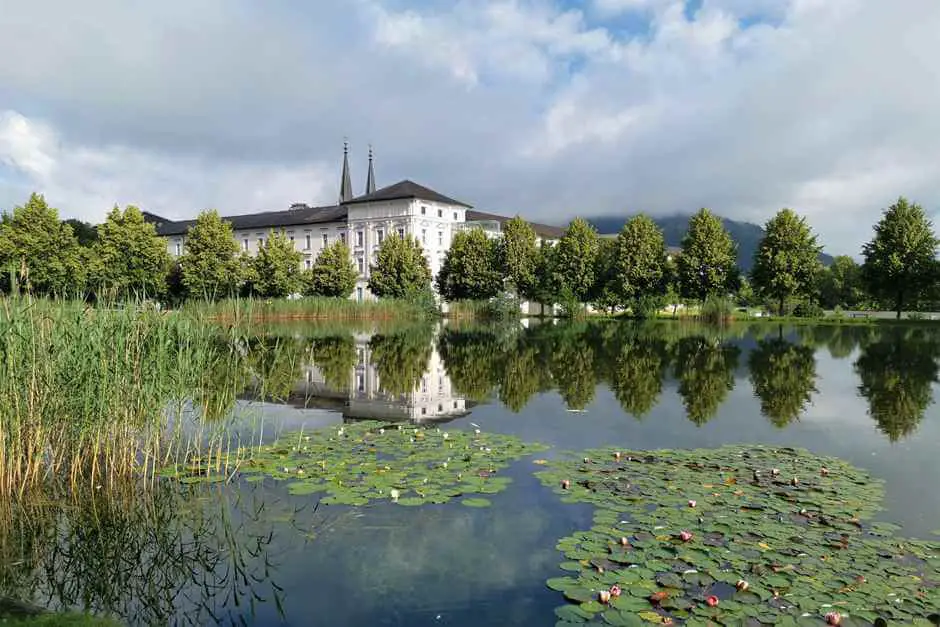
Admont is located on the edge of the Gesaeuse National Park in the Central Alps. It is almost 14 kilometers from the Ardning exit on the A9 to the Stift. Thus you can easily plan a trip to Admont on a trip to Styria. However, the abbey with the largest monastery library in the world, the Gothic Museum and its sights offer so many attractions, that a short detour is not enough. We spent three days in the monastery and have not yet seen everything. If you combine your stay with a few hikes in the national park, you can extend your excursion to Admont and the Abbey to a week or more. We spent the nights in the monastery. Rooms are limited, however. In Admont there are also accommodations.
The largest Monastery Library in the world
Admont is a Benedictine monastery in Styria. It was founded in 1074. The monks have saved the knowledge of their times for centuries. The Admont library of the Middle Ages was very extensive. At that time the monks already studied in the universities of Europe, among others in Padua or in Prague. Father Maximilian describes the monastery library as a “store of knowledge and a temple of science”. The largest monastery library in the world was built in the Baroque period in Admont.
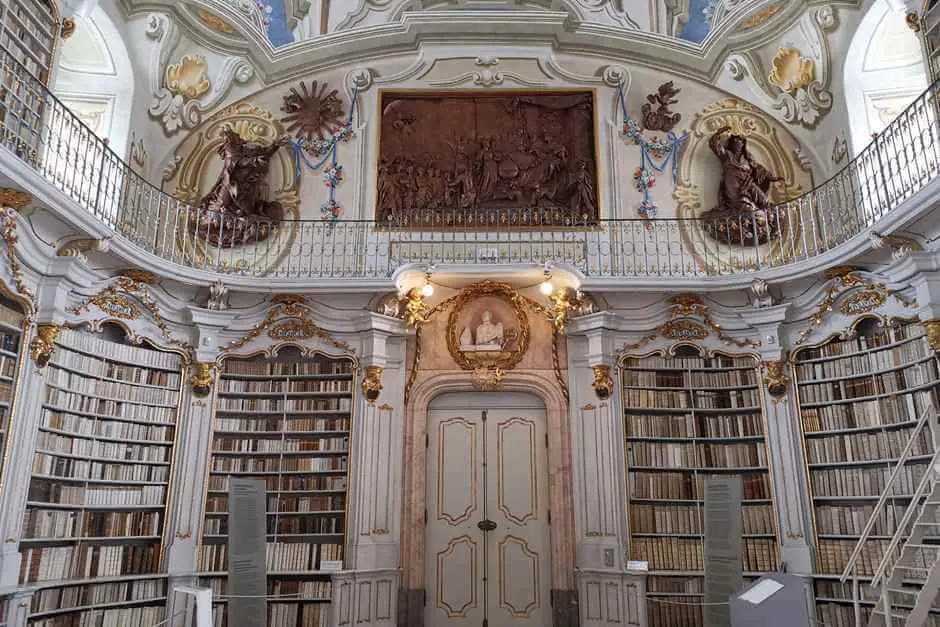
Matthäus Offner, who was abbot of the abbey from 1751 to 1779, also had the monastery library rebuilt in the course of the baroque renovation. His goal was to create a space for representation. Books are kept here. However, the Admont library was never a room where the monks worked. "The wow experience that the Admont Abbey Library creates is what you wanted to achieve," Father Maximilian explains. We have seen for ourselves that this works until today. The sight overwhelms us.
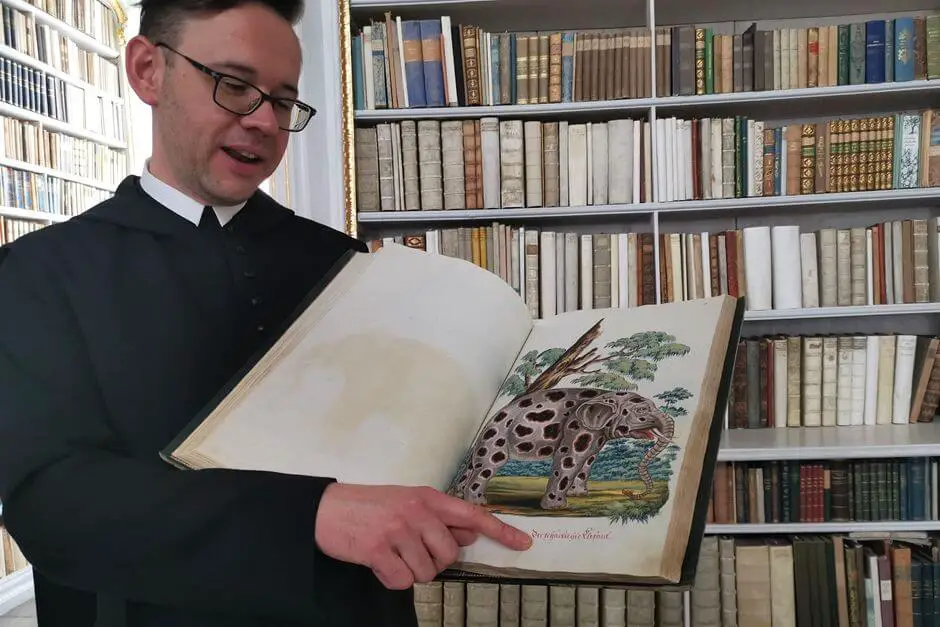
Frescoes by Bartolomeo Altomonte
Bartolomeo Altomonte created the frescoes in the monastery library. They do not represent religious motifs, but the branches of knowledge, professional groups, deities of the Romans and Greeks. They are allegories. Books of every color are on the bookshelves. Here you will find works on natural sciences as well as books dealing with questions of law. There are encyclopedias and reference works, but also literature from Goethe and Schiller to Winnetou and Old Shatterhand. The social mission of the monastery is reflected in the collection of books in the monastery library.
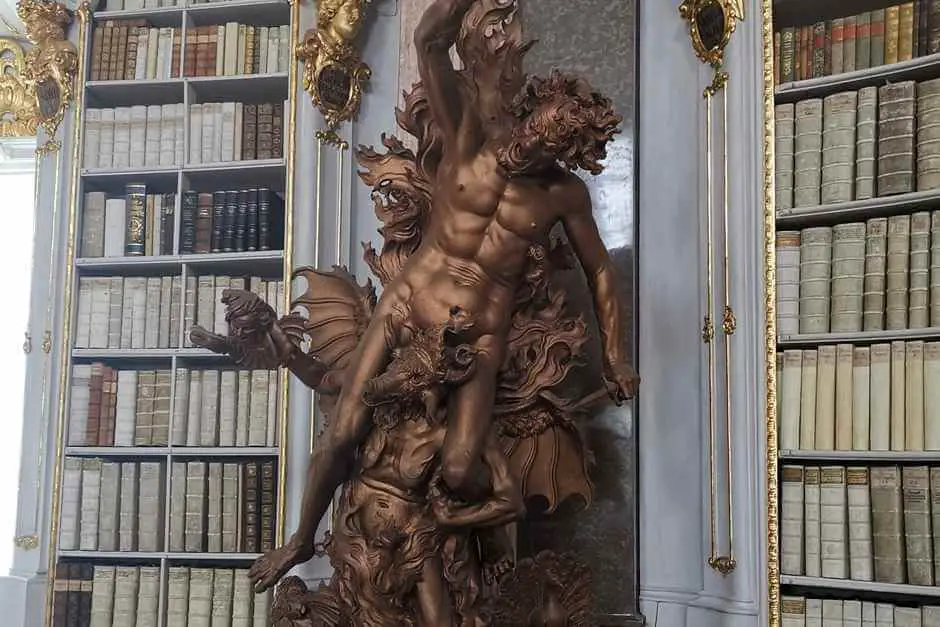
The Four Last Things by Joseph Stammel
In the middle of the monastery library there are four figures that represent allegories. The “Four Last Things” by Joseph Stammel embody death, resurrection, hell and heaven. The sculptures are made of limewood, which has been overlaid with bronze.
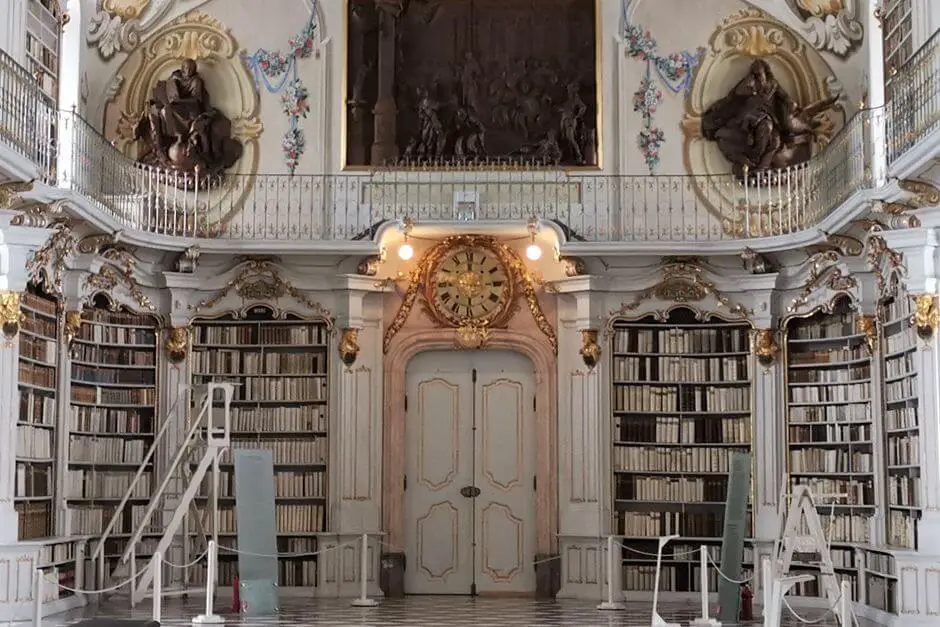
Clock and gallery in the monastery library of Admont Abbey
The third part of the monastery library houses the theological works of the monastery. The clock that is located above the exit is interesting. The clock dates from 1800. Its clockwork is in a chest on the gallery. It still works today and only needs to be wound up once a year. The clock mechanism can be reached via secret doors that lead to stairs. These lead to the gallery. However, it is not accessible to visitors. If you want to enjoy the view of the Admont Abbey library from the gallery, you have to visit it virtually. For a small donation you can take a closer look at the largest monastery library in the world.
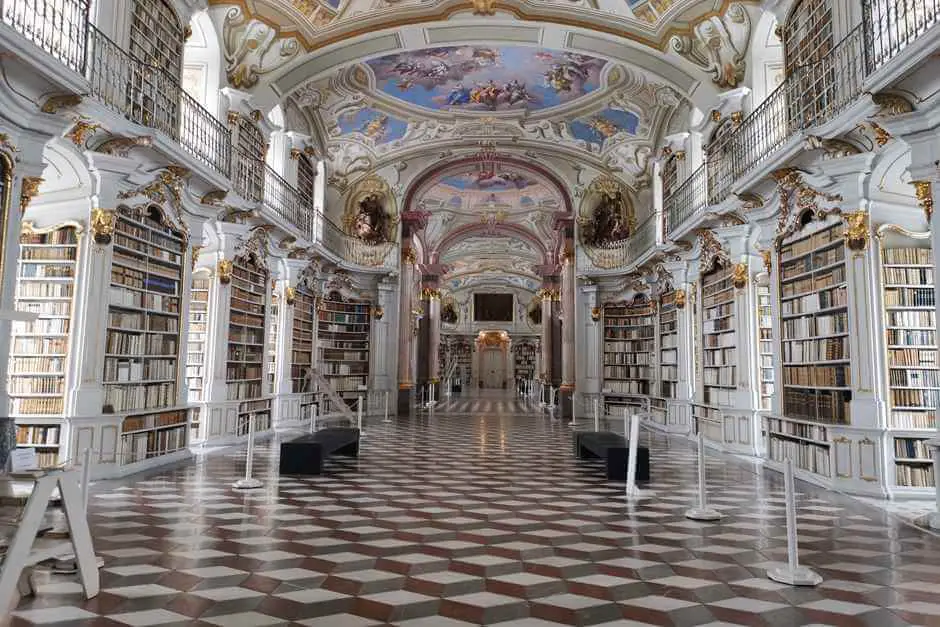
Treasures in the archive of the monastery library
Father Maximilian then leads us to the archive of the monastery library. This is not part of the public tour. However, if you want to research the books of the monastery, you can do so. All you have to do is contact the librarian and present your concerns. If Admont Abbey has works in its collection that are useful for this purpose, permission to work in the archive can be granted. "However, it is often the case, that applicants quickly abandon their research," says Father Maximilian. "Manuscripts are usually not so easy to read and understand."
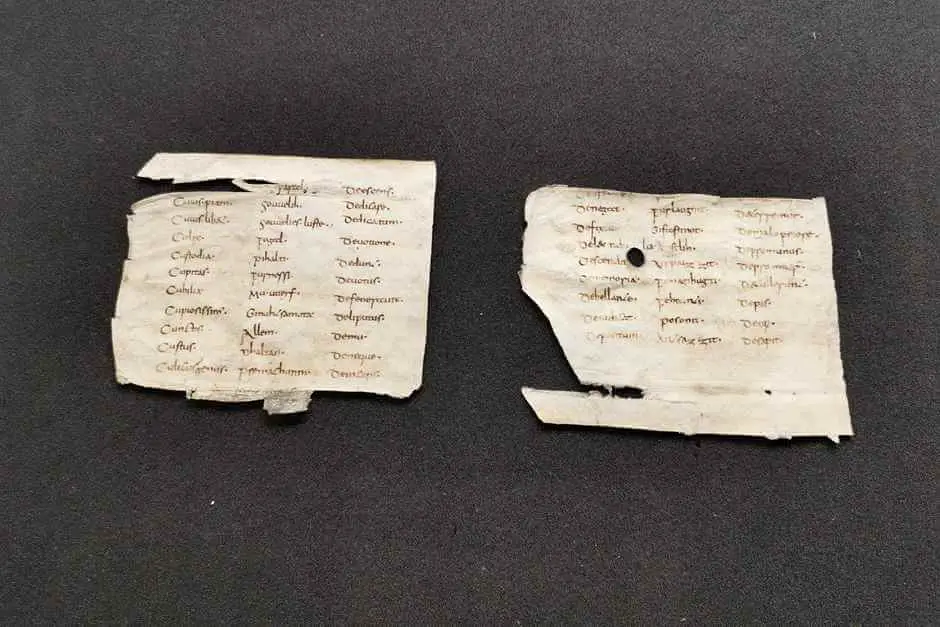
Two new sheets from the oldest book in German, the Abrogans
In 2012 Martin Haltrich worked on the digitization of Hebrew writings in the Admont Abbey. By chance, he discovered two leaf fragments, that clearly belong to the Abrogans, the oldest German book! This book is a dictionary, in which the monks at the time of Charlemagne translated words from Latin into German. The leaves are probably a few years younger than the original version, which is in the Stiftsbibliothek in St. Gallen. That dates from 780.
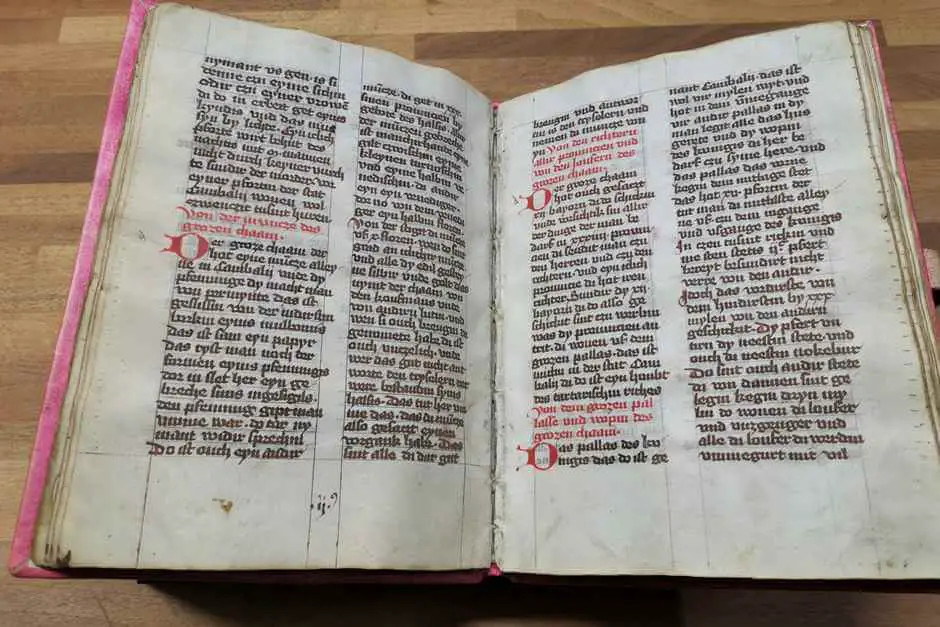
A manuscript of Marco Polo's travels
Another treasure is a manuscript of Marco Polo's travels. This is one of the first translations of the book into German. Marco Polo was born in Venice around 1250 as the son of a merchant. He followed in the footsteps of his father Nicolo and his uncle, who traveled as traders in Asia Minor. They were on the road on behalf of the Pope and were supposed to bring spices and oil to Venice. In Asia Minor, they entered the service of the Grand Vizier and traveled the Orient for twenty years before returning to Venice. Marco Polo was captured there. In prison he told a fellow prisoner about his travel experiences. The latter wrote the story down in a Franco-Italian dialect. From there the book was translated into Latin and finally into other European languages. The record in the Admont Abbey dates from the 14th century and is written in a Thuringian-Saxon dialect.
The largest monastery library in the world is not only impressive because of this superlative. The works that are collected in it overwhelm every historian and culture lover. The monastery library is not the only attraction that Admont Abbey offers for those interested in culture. There are several museums in the monastery. In addition to the Natural History Museum, there is also a Museum of Contemporary Art and an Art History Museum, which due to Corona will only be reopened in 2021. We visit instead
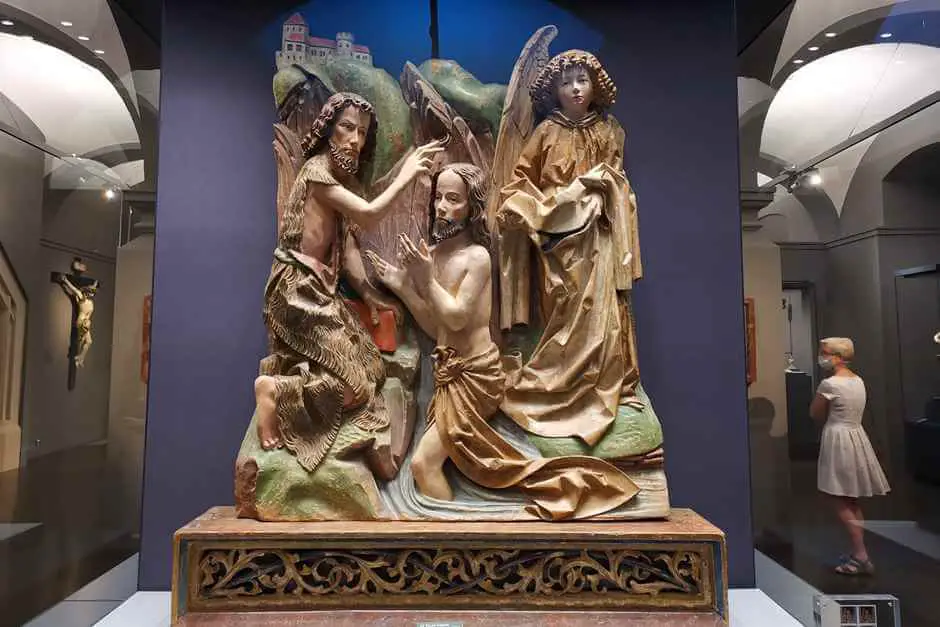
The Gothic Museum in Admont Abbey
We really like Gothic architecture and art. After visiting the monastery library, we look forward to discovering the Gothic Museum. It is always impressive to see the works of art and buildings of that time and consider the simple tools, with which they were created. We were excited to see, what awaits us at the Admont Abbey in the Gothic Museum. The permanent exhibition "Close to Heaven - Art of the Middle Ages" shows 85 works from the collection of Kuno Mayer.
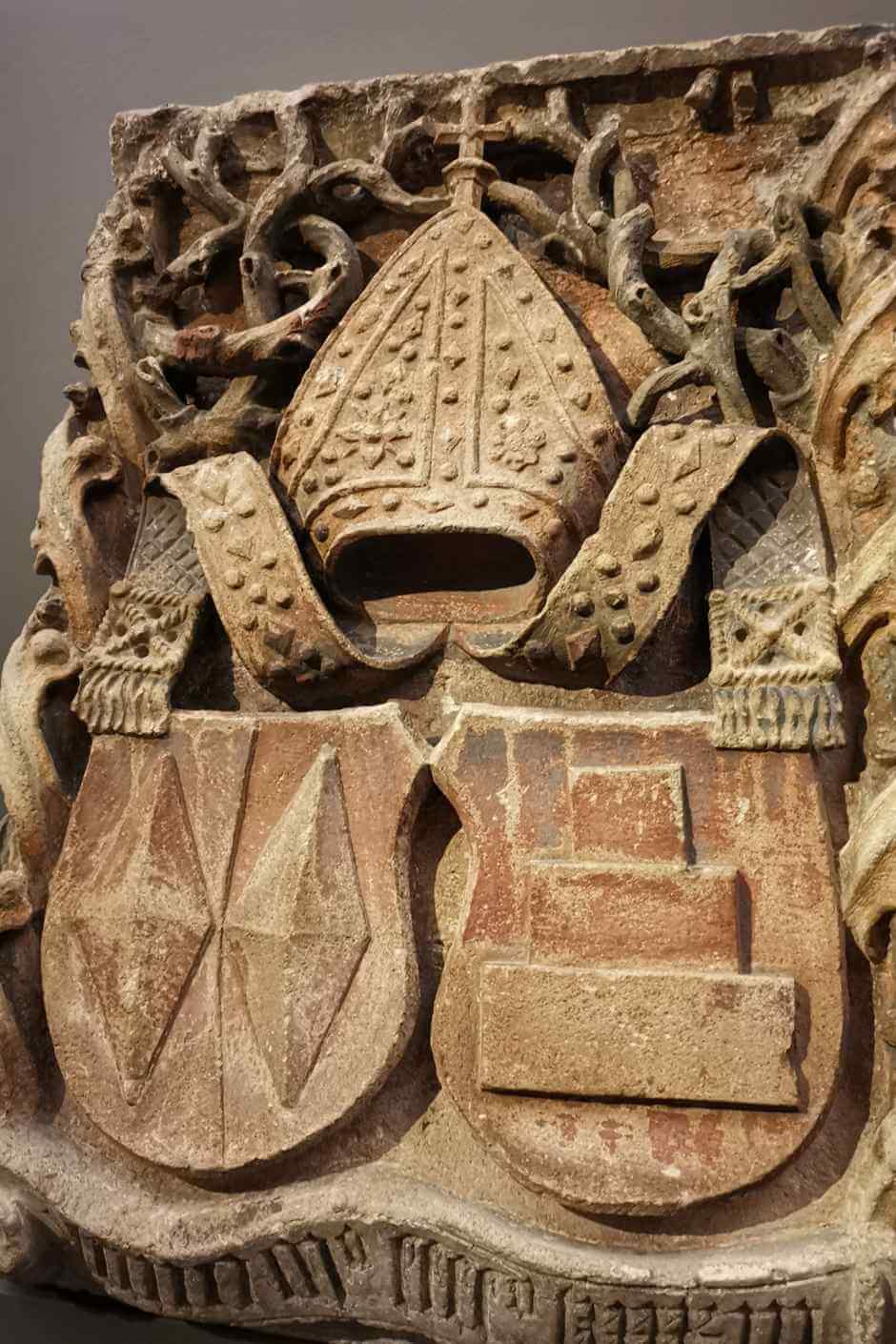
Among the exhibits are sculptures of Madonna figures as well as saints such as St. Anna Selbtritt. It is striking how expressive the facial features are. The drapery of the robes is also very emphasized. These are characteristics of Gothic art. Figures are displayed individually. Unlike in Romanesque art, when the appearance and looks of individuals were irrelevant.
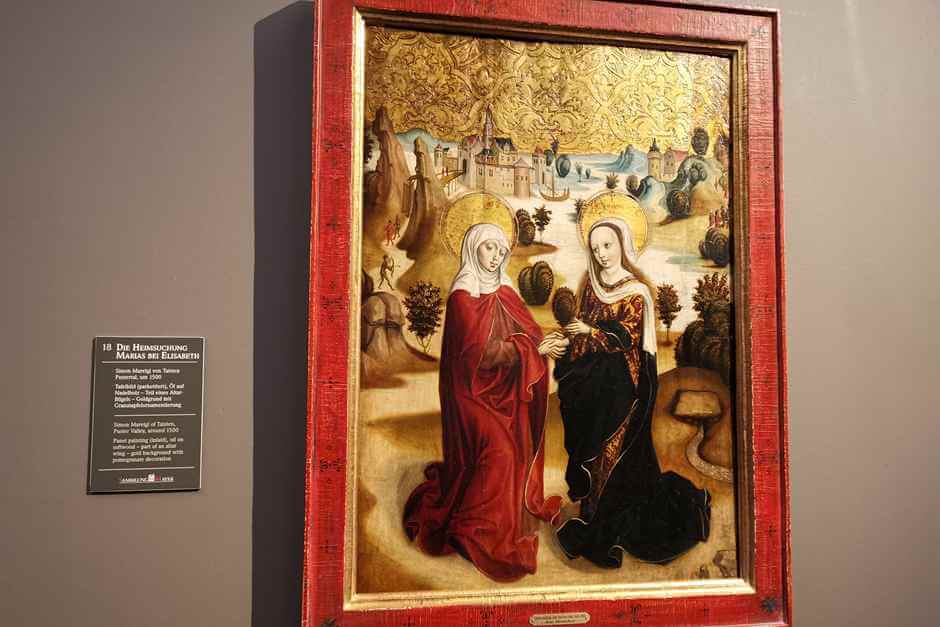
Landscapes gain depth. Perspective becomes more important, even if the depiction of reality does not yet play a major role. The sky is decorated with gold patterns. One of the masterpieces that impressed me the most was this relief that represents the Last Supper.
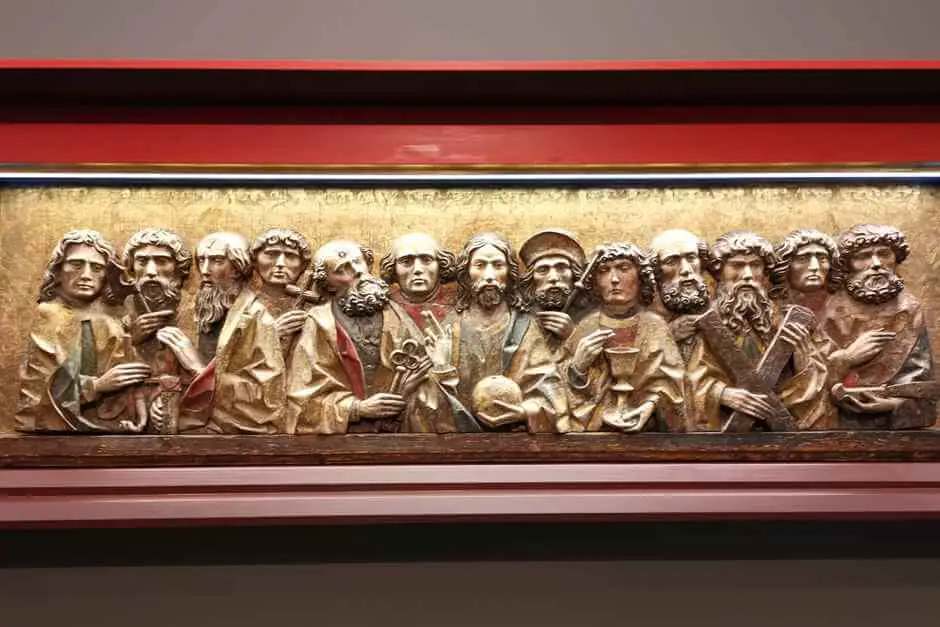
The apostles surround Jesus, who is depicted in the middle. This relief clearly shows the importance the sculptor placed on depicting the faces of the people individually. Each of them has a personality that is expressed on their face.
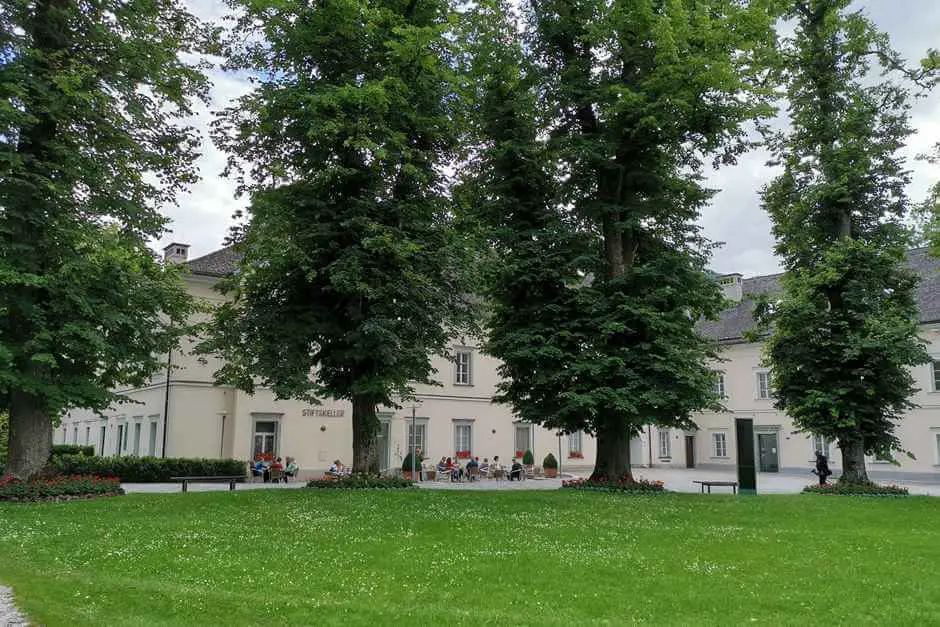
Enjoy the Stiftskeller
After enjoying so much art, a visit to the Stiftskeller feels just right. With pasta with porcini mushrooms and a turkey schnitzel with boiled potatoes and cranberries, we look back at a day full of art.
A Walk through Admont Abbey
As beautiful and worth seeing the monastery library and the Gothic Museum are, Admont Abbey has even more to offer. Be sure to plan a few hours to visit the monastery garden and the herb garden. How nice monastery gardens are, we saw on a trip through monasteries in Lower Austria a few years ago. The monastery garden and the herb garden of Admont Abbey fit well into this series of beautiful abbey gardens.
The Hemma Pilgrimage Trail begins in Hemma Park in front of the Collegiate Church. This leads from Admont Abbey to Gurk in Carinthia. Hemma von Gurk (approx. 995-1045) was one of the richest women of her time, who dedicated her life to Christian and social tasks after the death of her husband. In 1043 she had a nunnery and a church built in Gurk in Carinthia. She left her possessions in Upper Styria for the construction of a monastery in Admont. The Archbishop of Salzburg Gebhard of Salzburg founded the Admont Abbey in 1074.
Admont Abbey also has a pharmacy. This is located next to the administration building of the monastery at Hemma Park. There you will also find the Stiftskeller, which is located both with his Terrace Area as well as with its cozy dining rooms for a break full of enjoyment.
Travel Arrangements:
Parking at the airport
Here you can reserve your parking space at the airport.
How to get there
Address: Admont 1 in 8911 Admont, Austria
Arrival by plane, bus or train*. The nearest airport is in Graz (111 km) or Linz (118km). Admont Abbey can be easily reached by car via the Pyhrnautobahn A9.
The most comfortable way is by car. You can book a rental car * here.
Accommodations:
Accommodations in and around Admont Abbey * you can find under this link.
Opening times of the monastery library and Gothic museum:
from July 1st to October 30th 2020
Open from Wednesday to Sunday and on public holidays from 10:30 a.m. to 3.30 p.m.
Closed on Monday and Tuesday
Other destinations in Styria
- Rein Abbey and pilgrimage church of Maria Straßengel
- In St Lambrecht
- Im murtal
- During the Sausal wine region
- Close to Therme Loipersdorf
- The South Styrian Wine Route
- At the Schilcher wine route
- Im Ausseerland
- In the capital Graz
- In Schladming
- Discover Styrian delights
- More tips for the Styria here.
More tips for Trips to Savor and Slow Travel you can find under these links. What is Slow Travel to you?
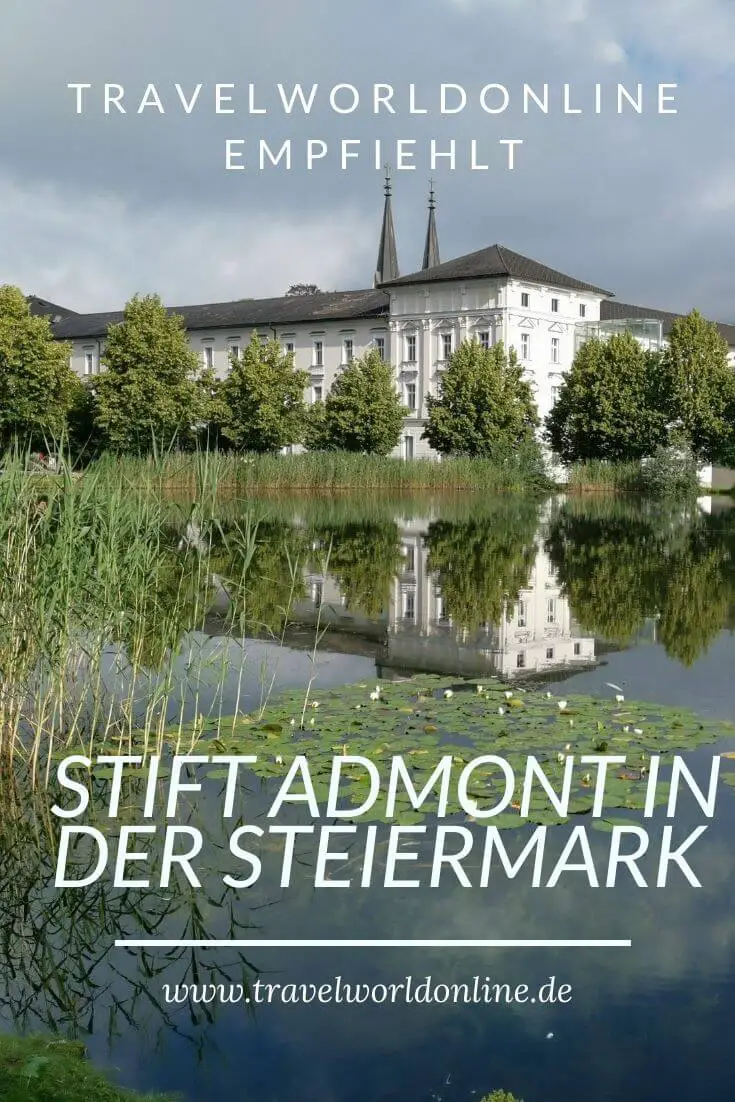
Do you already know:
- Salzburg Stiftskeller
- Lilienfeld Abbey - Abbey Library, Monastery & Gallery
- Balloon Museum Gersthofen
- Salzburg Christmas in the Stiftskeller
- Recipes from all over the world
- Impressions of Chateau Frontenac in Quebec
- Finance Holiday - Travel Blogger Tips
Source Admont Abbey - Excursion destinations in Styria: Research on site at the invitation of Monastery empire. Our opinion remains unaffected.
Text: © Copyright Monika Fuchs, TravelWorldOnline
Photos: © Copyright Monika Fuchs, TravelWorldOnline
Video: © Copyright Petar Fuchs, TravelWorldOnline
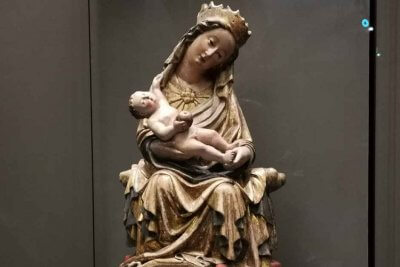
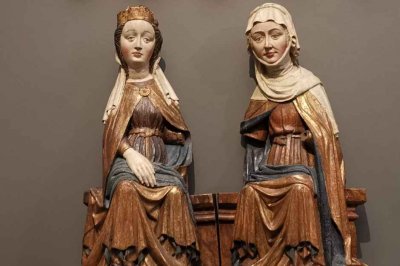
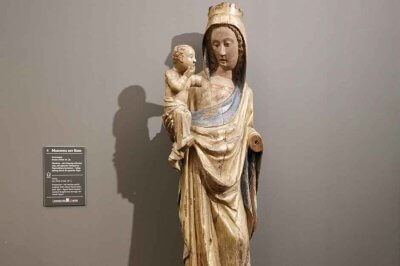





Hello you two, I have had to read twice what is meant by the "largest monastery library in the world" - namely the size of the reading room. In my understanding, the size should be based on the existing building and therefore on the amount of knowledge gathered, not on the architecture of a building. But be it. Still a nice article. Greetings St.
Hi Stefan,
how it is with superlatives. It always depends on the interpretation. Obviously this served its purpose :-). You have read the article.
Best regards,
Monika